In the diverse ecosystems of New Jersey, a captivating array of owls grace the landscape, each with its unique features and adaptations.
Explore the enchanting world of these nocturnal hunters as we unveil 10 different types of owls that call the Garden State home.
This compilation unveils the rich tapestry of owl species residing in New Jersey, from the iconic Great Horned Owl Owl to the elusive Eastern Screech Owl.
Delve into the intricacies of their habitats, distinctive calls, and their vital role in maintaining ecological balance.
Whether soaring through the expansive skies or hidden within the shadows of dense woodlands, these remarkable birds offer a glimpse into the wild wonders that thrive in the heart of New Jersey.
Join us on a journey of discovery as we unveil the diverse and fascinating types of owls that grace the skies of this vibrant state. Stay sharp.
10 Owls of New Jersey
Let’s explore the enchanting world of New Jersey’s owls, where diverse habitats host various fascinating birds.
Each species brings unique adaptations to survive and thrive, from the majestic Snowy Owl to the elusive Boreal Owl.
Journey into the lives of these nocturnal wonders as we delve into their characteristics, habitats, and conservation status.
1. Great Horned Owl
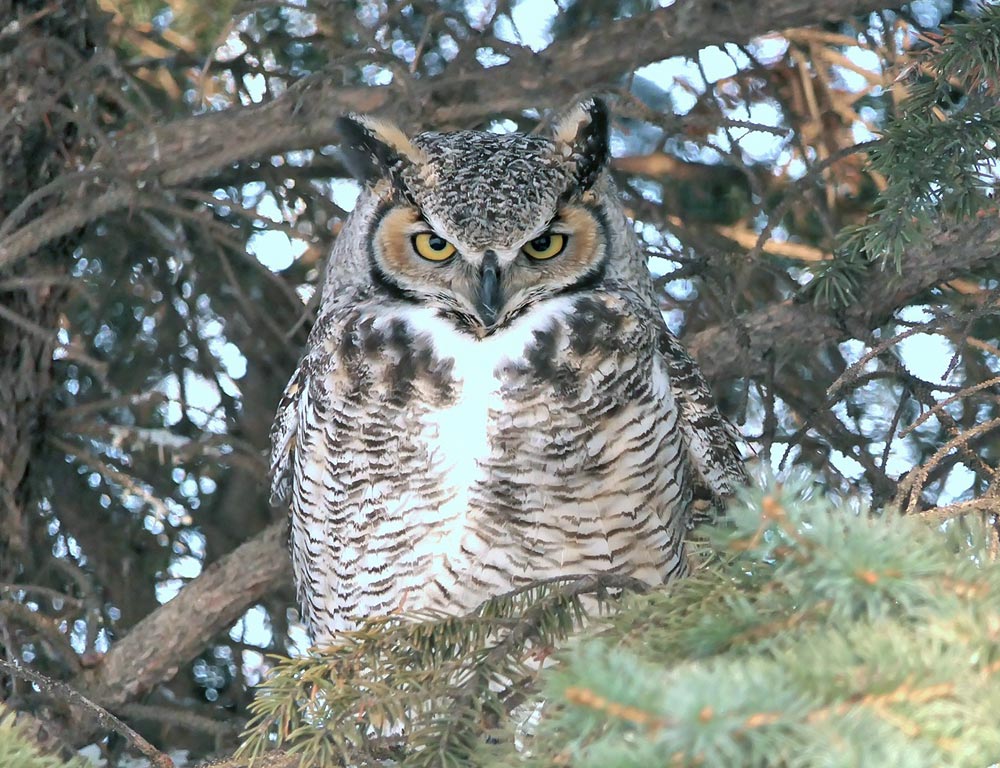
- Scientific Name: Bubo virginianus
- Category: Bird of Prey
- Population: Common and widespread
- Life Span: Up to 15-20 years in the wild
- Size: 18-25 inches tall
- Weight: 2-5.5 pounds
- Food: Varied diet, includes mammals, birds, and reptiles
- Wingspan: 3.3 to 4.8 feet
- Status: Stable
The Great Horned Owl, a formidable nocturnal predator, is a common and adaptable species in New Jersey.
Possessing excellent vision and hearing, it can hunt in complete darkness. Its powerful talons and beak preys on various creatures, from small rodents to other birds.
Great Horned Owls are known for nesting in various habitats, including forests and urban areas. These owls are solitary and highly territorial, with pairs often maintaining the same territory year-round.
Nesting in large trees, they often reuse old nests built by other birds. Their adaptability to different environments has contributed to their widespread presence across North America.
2. Barn Owl
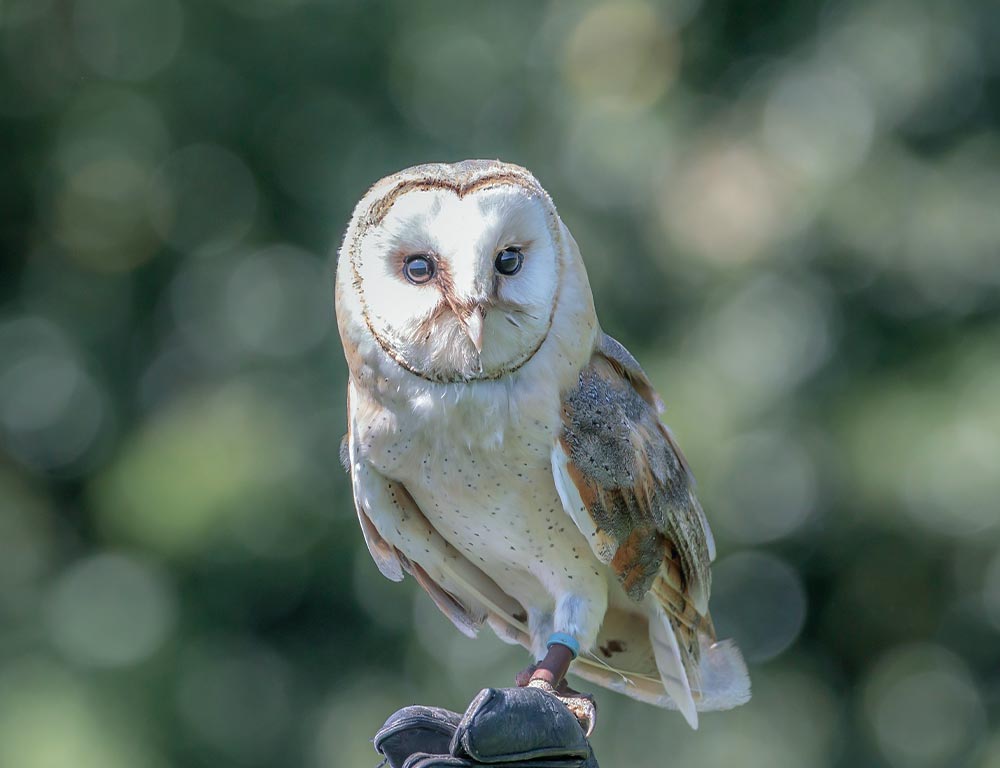
- Scientific Name: Tyto alba
- Category: Bird of Prey
- Population: Declining in some areas due to habitat loss
- Life Span: 2-4 years in the wild
- Size: 12-15 inches tall
- Weight: 1-2 pounds
- Food: Primarily small mammals, especially rodents
- Wingspan: 3.2 to 3.5 feet
- Status: Species of Concern
Barn Owls are recognizable by their heart-shaped facial discs and pale plumage. They are excellent rodent hunters and are particularly beneficial to farmers.
These owls often reside in barns, old buildings, or other structures, where they raise their young. Unfortunately, their populations have faced challenges due to habitat loss and the use of rodenticides.
Despite their nocturnal nature, Barn Owls may also hunt during the day. Their specialized facial discs help funnel sound to their ears, aiding them in locating prey in total darkness.
3. Barred Owl
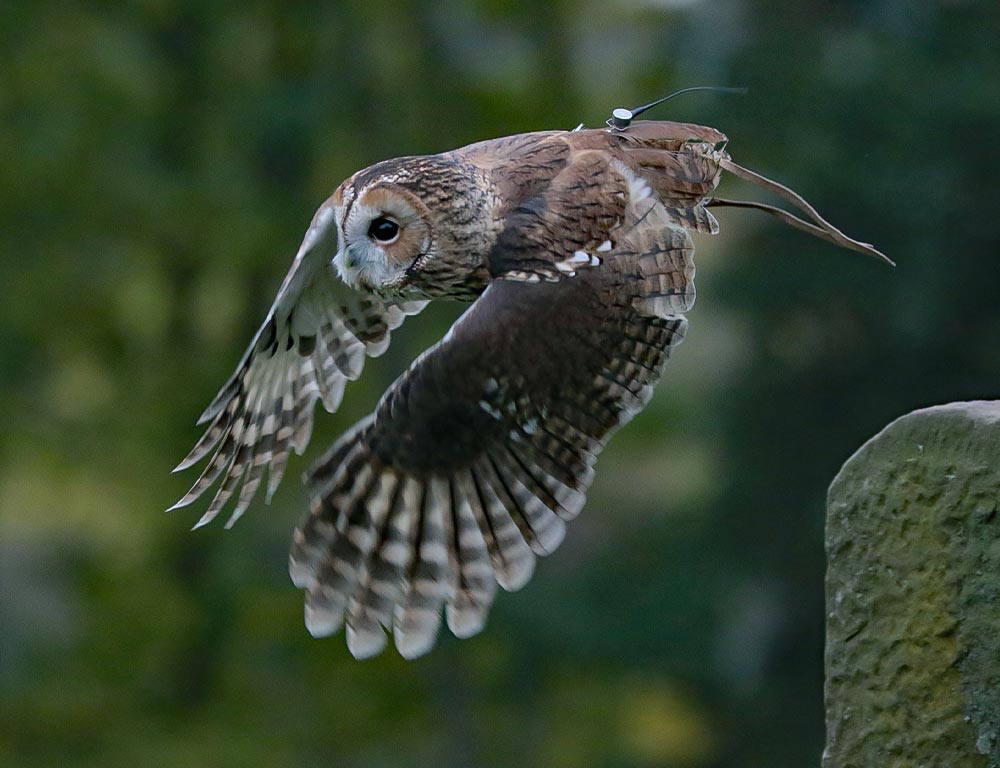
- Scientific Name: Strix varia
- Category: Bird of Prey
- Population: Stable
- Life Span: Up to 10 years in the wild
- Size: 16-24 inches tall
- Weight: 1-2.5 pounds
- Food: Small mammals, birds, amphibians, and invertebrates
- Wingspan: 3.2 to 3.8 feet
- Status: Least Concern
Recognizable by their distinctive barred plumage and dark eyes, Barred Owls are versatile hunters.
They inhabit mixed forests and wooded swamps and are often heard at night, emitting their characteristic “who-cooks-for-you” call.
Barred Owls are known for their adaptability and have successfully integrated into suburban environments.
They strongly prefer dense woods near water, where their diverse diet includes small mammals, birds, amphibians, and invertebrates. Barred Owls do not migrate and maintain territories year-round.
4. Snowy Owl
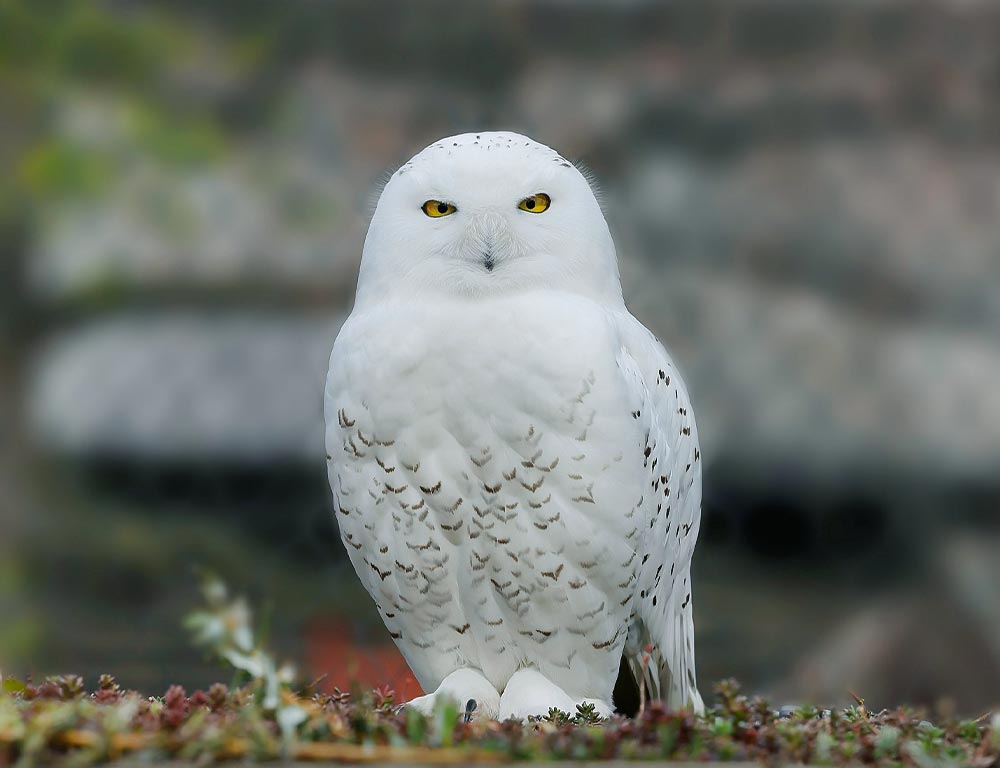
- Scientific Name: Bubo scandiacus
- Category: Bird of Prey
- Population: Varies, irruptive movements based on food availability
- Life Span: Up to 10 years in the wild
- Size: 20-28 inches tall
- Weight: 3.5-6.6 pounds
- Food: Mainly lemmings, also birds and mammals
- Wingspan: 4.2 to 4.8 feet
- Status: Vulnerable in some regions
The Snowy Owl is a majestic and well-known Arctic bird that occasionally visits New Jersey during winter months. Known for its striking white plumage and large, round head, it is adapted to cold environments.
Snowy Owls are primarily hunters of lemmings, but they also target birds and mammals when lemming populations are low. Their irruptive movements into new regions are often linked to food availability.
These owls are diurnal hunters, taking advantage of the extended daylight in the Arctic. During the breeding season, snowy owls are known for their ground nests, often situated on elevated sites that provide a good vantage point.
5. Eastern Screech Owl
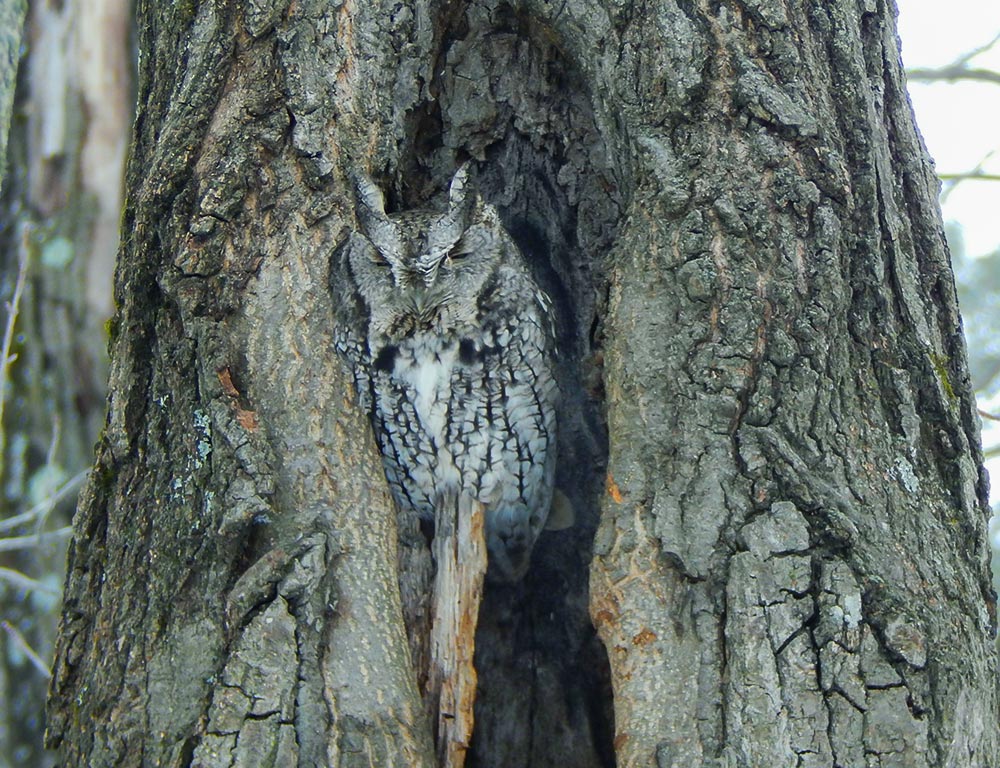
- Scientific Name: Megascops asio
- Category: Bird of Prey
- Population: Common
- Life Span: 4-6 years in the wild
- Size: 6-10 inches tall
- Weight: 4-9 ounces
- Food: Insects, small mammals, birds
- Wingspan: 1.5 to 2 feet
- Status: Least Concern
The Eastern Screech Owl is a small, adaptable owl species found in various habitats, including forests, urban areas, and suburban parks.
Despite its name, it doesn’t always produce a true screeching sound; instead, it can produce soft trills and whinnies.
Eastern Screech Owls come in two color morphs: red and gray. These owls are cavity nesters, often using abandoned woodpecker holes or man-made nest boxes.
They are primarily nocturnal hunters, preying on insects, small mammals, and birds. Their camouflaged plumage helps them blend into their surroundings and avoid predator detection.
6. Northern Saw-whet Owl
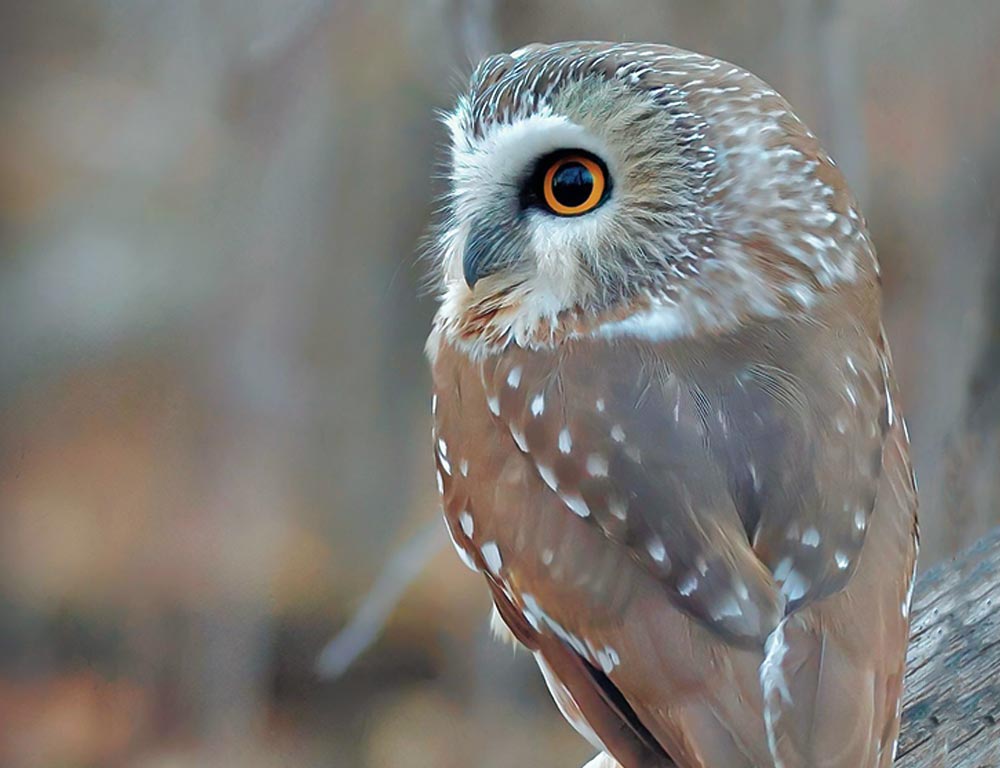
- Scientific Name: Aegolius acadicus
- Category: Bird of Prey
- Population: Stable
- Life Span: 3-5 years in the wild
- Size: 7-8 inches tall
- Weight: 2-5 ounces
- Food: Small mammals, birds, insects
- Wingspan: 1.5 to 1.7 feet
- Status: Least Concern
The Northern Saw-whet Owl is a small, secretive owl species with a distinctive “toot-toot-toot” call resembling a sharpened saw. These owls are found in various forested habitats across North America.
They are primarily nocturnal hunters, preying on small mammals, birds, and insects. Northern Saw-whet Owls nest in tree cavities and are known for their monogamous breeding pairs.
Despite their small size, they are efficient hunters, capturing prey with their sharp talons. These owls migrate to different regions depending on food availability and breeding conditions.
7. Long-eared Owl
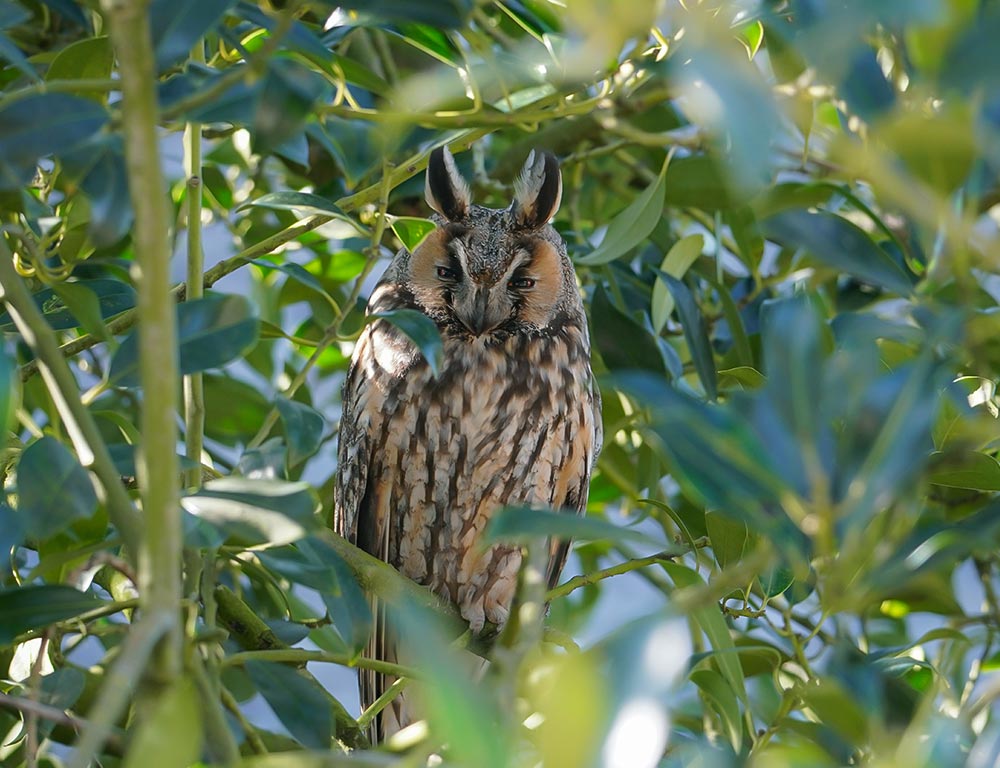
- Scientific Name: Asio otus
- Category: Bird of Prey
- Population: Stable
- Life Span: 4-10 years in the wild
- Size: 13-16 inches tall
- Weight: 7-15 ounces
- Food: Small mammals, birds
- Wingspan: 3.3 to 3.7 feet
- Status: Least Concern
The Long-eared Owl is characterized by its long “ear” tufts, which are feathers, not ears.
These owls are typically found in woodlands, coniferous forests, and marshy areas. They are mostly nocturnal hunters, preying on small mammals and birds.
Long-eared Owls are known for their communal roosting habits, where several individuals may gather in a single tree. They are generally monogamous during the breeding season and may reuse old nests built by other birds.
8. Short-eared Owl
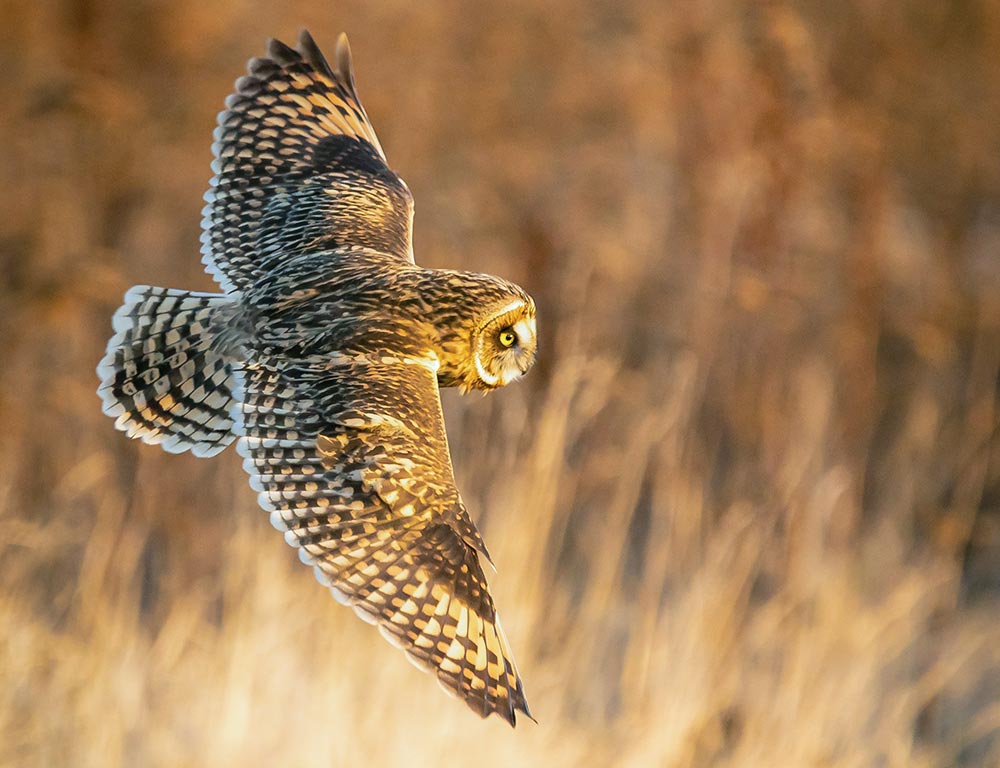
- Scientific Name: Asio flammeus
- Category: Bird of Prey
- Population: Populations fluctuate, considered a species of conservation concern in some areas
- Life Span: Up to 7 years in the wild
- Size: 13-17 inches tall
- Weight: 7-17 ounces
- Food: Small mammals, birds, insects
- Wingspan: 2.9 to 3.3 feet
- Status: Species of Concern
The Short-eared Owl is known for its distinctive facial disc and short ear tufts. It is primarily found in open habitats such as grasslands and marshes.
Unlike many other owls, Short-eared Owls are often active during the day, making them diurnal hunters.
They prey on small mammals, birds, and insects. Short-eared Owls are ground nesters, and their populations face threats from habitat loss and changes in land use.
9. Boreal Owl
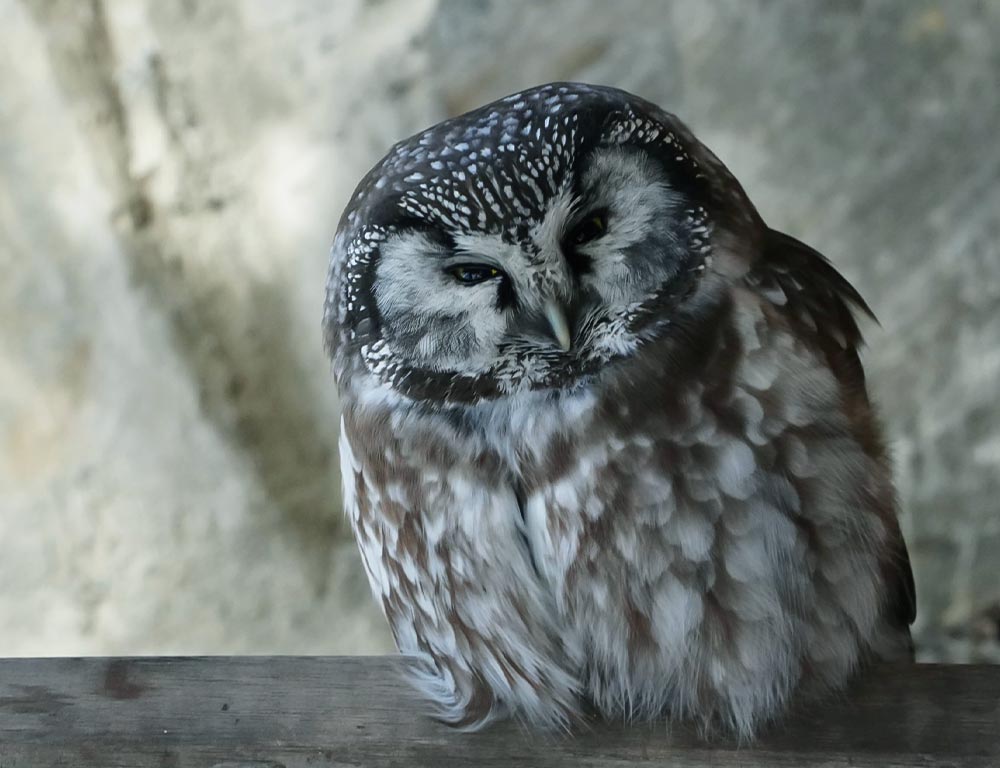
- Scientific Name: Aegolius funereus
- Category: Bird of Prey
- Population: Generally stable but can be locally threatened
- Life Span: Up to 10 years in the wild
- Size: 8-12 inches tall
- Weight: 3-7 ounces
- Food: Small mammals, birds, insects
- Wingspan: 2 to 2.3 feet
- Status: Least Concern
The Boreal Owl is a small owl species found in northern forests, including coniferous and mixed woodlands.
It is nocturnal and has a distinctive hooting call. Boreal Owls are skilled hunters, preying on small mammals, birds, and insects.
They often use old woodpecker cavities for nesting and are known to be secretive and difficult to observe. Despite their generally stable population, they can be locally threatened by habitat loss and changes in forest ecosystems.
10. Burrowing Owl
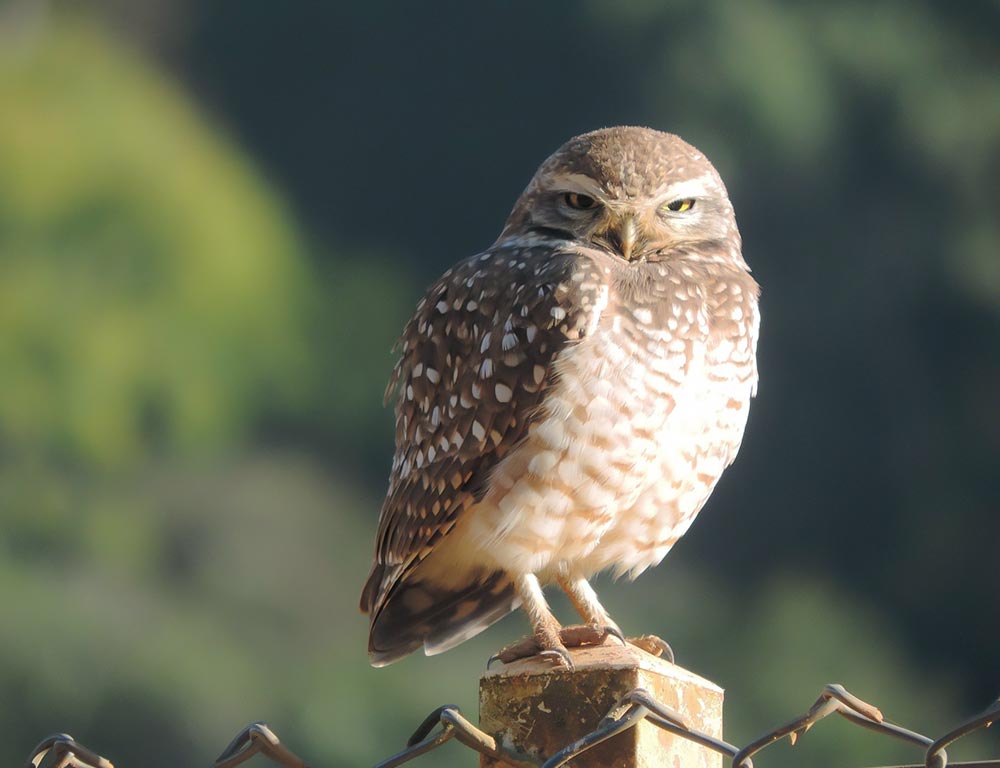
- Scientific Name: Athene cunicularia
- Category: Bird of Prey
- Population: Declining in some regions
- Life Span: Up to 9 years in the wild
- Size: 7-10 inches tall
- Weight: 5-8 ounces
- Food: Small mammals, insects
- Wingspan: 21 to 24 inches
- Status: Species of Concern
The Burrowing Owl is unique in its behavior, as it nests underground in burrows rather than in trees. It is found in open landscapes like grasslands, deserts, and agricultural areas.
Burrowing Owls are active during the day and are skilled hunters, preying on small mammals and insects. Their populations face threats from habitat loss, pesticide use, and disturbance to their burrow sites.
Conservation efforts are underway to address the decline in some regions. These three owl species contribute to the diversity of owl species in various habitats.
Each owl has its own set of adaptations and faces specific environmental challenges, making their conservation important for maintaining biodiversity.
Where to Spot Owls in New Jersey?
Embark on an owl-watching adventure in the diverse landscapes of New Jersey. The state offers a rich habitat for these captivating birds, from dense forests to open marshlands.
Discover the best spots to spot owls, each location providing a unique opportunity to observe these elusive creatures in their natural environment.
Wharton State Forest
Nestled within the sprawling expanse of the Pinelands, Wharton State Forest emerges as a sanctuary for various owl species.
Its diverse habitats, ranging from dense woodlands to expansive open spaces, create an ideal haven for these nocturnal hunters.
As night falls, the forest comes alive with the hoots and calls of owls, making it an enchanting destination for owl enthusiasts and nature lovers alike.
Forsythe National Wildlife Refuge
Forsythe National Wildlife Refuge is a coastal gem that boasts marshes and tidal areas that beckon the elusive Short-eared Owl.
Venturing into this refuge during the golden hours of sunset provides a heightened opportunity to witness these majestic birds in action, their silent flights and distinctive calls echoing across the marshlands.
Great Swamp National Wildlife Refuge
A symphony of nature unfolds within the heart of Great Swamp National Wildlife Refuge. The woodlands resonate with the haunting calls of Barred Owls, while Eastern Screech Owls find refuge in nesting boxes.
Explore the tapestry of woodlands and wetlands, where each rustle of leaves may lead to a captivating owl encounter.
Jakes Branch County Park
A blend of woodlands and fields characterizes Jakes Branch County Park, creating an inviting environment for the Eastern Screech Owl.
Seek out these nocturnal residents in tree cavities or nesting boxes, adding a touch of mystery to the park’s serene landscape.
Palmyra Cove Nature Park
Nestled along the Delaware River, Palmyra Cove Nature Park unfolds as a diverse canvas of habitats, drawing in the regal Great Horned Owl.
As evening descends, visitors may be rewarded with owl sightings, the park’s varied landscapes providing an ideal backdrop for observing these majestic creatures.
Belleplain State Forest
Belleplain State Forest, with its mosaic of pine forests and wetlands, welcomes the Long-eared Owl, particularly during their winter migrations.
The forest echoes with these elusive owls’ soft calls, adding enchantment to the tranquil surroundings.
Cape May Point State Park
The coastal allure of Cape May Point State Park transforms winter nights into a spectacle as Snowy Owls grace its dunes and beach areas.
With their striking Arctic presence, these winter visitors create a captivating tableau against the backdrop of the Atlantic, offering a rare glimpse into the world of these nomadic hunters.
As you venture into these owl-friendly locations, remember to maintain a respectful distance and adhere to ethical wildlife viewing practices to ensure the well-being of these majestic birds.
Wrapping Up
In the enchanting realm of New Jersey’s diverse landscapes, the owls silently weave their tales of adaptation and survival.
Each species has carved a niche in the state’s ecosystems, from the mystical Great Horned Owl to the Arctic wanderer, the Snowy Owl.
As we explored their habitats in Wharton State Forest, Forsythe National Wildlife Refuge, and other owl-friendly locations, we witnessed the delicate balance between human observation and wildlife preservation.
Through the lens of conservation, it becomes evident that our responsibility lies in nurturing these habitats and respecting the natural rhythms of these nocturnal wonders.
As we marvel at their silent flights and haunting calls, let us also commit to safeguarding the spaces they call home.
New Jersey’s owls are not just birds but guardians of biodiversity, reminding us of our role in preserving the tapestry of life that binds us all. Stay focused.